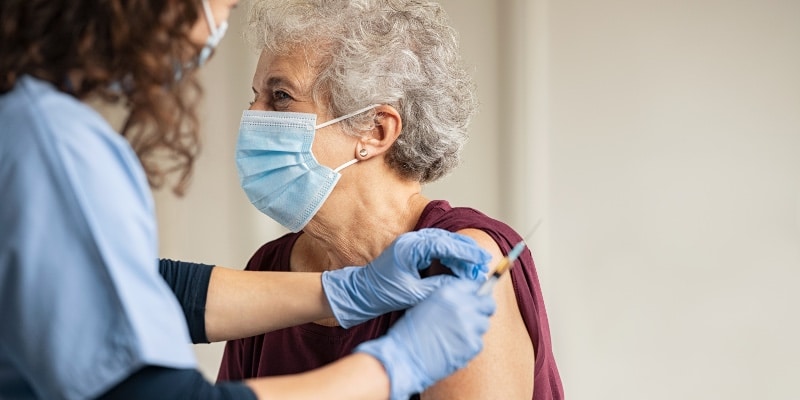With the start of the new year many Americans are facing the harsh reality that major problems in our society are following us into 2021. However, one reassuring aspect of the new year is the rollout of COVID vaccines, which started last December. For many, the vaccine promises an eventual return to normalcy.
But not everyone is equally excited about it. More than 25% of the public say they are either hesitant, or refuse, to get the vaccine, even if it’s free and deemed safe by scientists. This puts herd immunity—when those who aren’t immune to a disease are indirectly protected because the majority is—in jeopardy. The vaccination rate needed to achieve herd immunity differs depending on the disease, but more contagious diseases, like COVID-19 require a higher percentage of the population to be immune to stop the spread. What can public health officials do to get enough people on board?
Jobs Theory
Jobs Theory is a framework for understanding the circumstances that drive behavior. It reveals that people rarely make decisions around what the “average” person may do in a given situation, but instead, often do things because they find themselves with a problem they would like to solve (we call this their “Job to Be Done”). Even in the same situation, two people may have different “jobs” for which they “hire” various solutions, based on their personal preferences and life circumstances.
In the context of the pandemic, policymakers may wish all Americans to have the job of “Prevent myself and my loved ones from getting COVID,” but that may not be the most important job on everyone’s mind. Depending on one’s circumstances and personal motivations, Jobs to Be Done can vary widely.
Addressing adherence
In order to increase vaccination rates, patients need to believe that receiving the vaccine will actually help them make progress in their lives, in the way that they want to make progress. Healthcare professionals will not convince people by persuading them to re-align their personal priorities. Instead, they must meet people where they are, and find ways to connect with jobs that people are already looking to get done in their lives.
This will differ for each individual, as everyone has their own personal motivations in life. Campaigns for vaccine adherence need to do their best to address a wide range of functional, social, and emotional factors.
1. Functional
Jobs all have a functional component; a large factor in why a person will often “hire” a product or a service for their job based on practical utility..
In a world beset by a pandemic, vaccination can unlock many functional realities—beyond protection from the virus—that have been restricted. These include many activities, both personal and business-related, such as: large-scale social gatherings, dining out, international travel, gradual rollback of mask mandates, and a return to normal business operations.
To appeal to those whose dominant job revolves around these functional aspects of society re-opening, public health professionals could emphasize that vaccination goes beyond personal health, but affects resuming normal activities. Policymakers could also make adherence a necessary component for certain activities, such as proving vaccination status to board a plane. Steps like that would turn vaccination into a fundamental necessity of any job.
2. Social
The social component of a job hits the need for social validation through the purchase of a certain product, such as high-end or designer goods. It’s human nature that people are concerned with how they are perceived by others.
Someone concerned about how they’re viewed by others might choose to get the vaccine depending on how those around them feel about receiving it. If friends and family all get vaccinated, others might as well, so as to not seem like an outsider; on the same note, living in a community where people believe the vaccine to be harmful can motivate others to skip out.
One way to address those focusing on the social optics of vaccination is by appealing to role models in those communities. Politicians, celebrities, and other public figures have posted photos and videos of themselves either receiving the vaccine or outlining their intention to receive it once eligible. For people who admire these public figures, this could turn the vaccine into a badge of pride.
3. Emotional
The emotional component of a job is about feelings; people may hire a product or service in part due to how it makes them feel. Products like life insurance and cars are often sold with a heavy emphasis on how the buyer feels following the purchase.
For some early recipients, the vaccine has provoked a feeling of relief and elation—that, finally, the end of a horrendous time is coming to a close. People may choose to get the vaccine for that sense of relief alone. The public health community can lean into this longing for feelings of relief, safety, and hope across its messaging efforts.
However, others are afraid of the vaccine. The speed with which it was developed can create fear and uncertainty around whether or not it’s worth it. Education campaigns can work to assuage these fears, either by disproving their validity or by juxtaposing them against the effects of COVID-19.
As we enter the second year of the epidemic, the vaccination rollout is providing a glimmer of hope that a sense of normalcy may soon return. Vaccines are public health’s biggest victory, and have paved the way for several diseases to be almost or completely eliminated. While people may have different reasons for choosing to get vaccinated, all of which are valid, appealing to the myriad jobs that vaccination may help accomplish can get more people on board.


